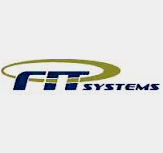System Configuration
Time Entry and Display Options
- Default Start Time: Choose the default start time for all time entries. Can be enforced by User’s Security Policy for regulatory
compliance, company policy or both.
- Day View Time Options: Choose the time intervals in minutes, the first time
and last time displayed in Day view.
- Time Spent Option: Choose whether the time spent only on a entry is required, or actual time ranges. Can be enforced by User’s Security Policy for regulatory
compliance, company policy or both.
- Time Spent Format: Can be set to decimal or time (hours/minutes) format and
can be enforced by User’s Security Policy.
- Regional Display Options: Supports Regional options (date format, time format,
currency display and language) so information can be displayed to users in different
geographic locations in a familiar format.
User Account
- User Accounts Options: Assign a license to an employee, grant the appropriate
security policy and assign a password.
- Change Password: Self-service; users can change their password at any time
if the option is granted via their Security Policy.
- Password Options: Enforce strength of passwords set by users and/or administrators.
- Active Directory Integration: Optional for Office Timesheets self-installed version only – not available
for Office Timesheets On Demand.
Security and Policy Enforcement Options
- Precise Interface Control and Display: Determine precisely what tabs and
functions a user can see when logged into Office Timesheets.
- Control editing of Employee Rate Tables: Determined per user account.
- Control editing of Employees, Elements, Expense Codes and Holidays: Determined per user account.
- Multiple Options for granting or limiting rights by Element Items, Tasks and/or
Time Entries: Determined per user account and/or employee group.
- Separate control over modifying Task and Task Details: Determined per user account
and/or employee group.
- Precise control over entries once entered: Determined per user account.
- Lock Employees: Determined per user account and/or employee group; can also override locks.
- Enforce Time Entry and Regional Options through Security Policy: These options
can be available or locked from editing in user’s interface.
Other Options
- Company Information: Holds company and company contact information.
- Email Account: Connect to a POP3 email account to send and receive notifications
during the approval process.
- Auditing: Enable auditing and clear audit history, for regulatory compliance,
company policy or both.
Process Management
Employee Management, Data Tracking and Reporting
- Employee Management: Add/edit employee names and their information in order
to assign a license to them; manage their employee status and contact information.
- Reporting Period by Employee: Assign a specific reporting period to an employee.
- Holidays Group Assignments by Employee: Assign an employee to a specific
holiday group (U.S., Canada, etc.).
- Lock Entry Dates by Employee: Set a date that the employee cannot access
or edit any time or expense entries before this date.
- Employee Rate Tables: With 5 unique rates and overtime rates all set by effective
date for historical rate tracking and reporting.
- Fully Customizable Employee Rate Tables: Allows for simultaneous tracking
of multiple rate types such as Pay Rate, Overhead Cost Rate, Billing Rate, Shift
Differentials, Hazard Pay and more.
- Unlimited Group Support: An employee can be included in as many employee
groups as needed.
- Dependencies by Employee: Select various elements that are dependent upon
one another under an employee (for instance, a project is dependent upon a specific
client that an employee is working with).
- Add Custom Fields to Employee Object: Support various field types (Date format,
Selection Lists, Currency, Text and more) for flexibility and familiarity among employees.
Expense Management and Coding
- Expense Management: Add/edit expenses and their statuses.
- Custom Expense Amounts: Specify price, quantity, markup, markdown and tax.
- Unlimited Group Support: An expense can be included in as many expense groups
as needed.
- Custom ID and Coding: Assign expenses custom field expense IDs, account codes,
audit codes, and more for regulatory compliance, company policy or both.
Custom Elements
- Define Custom Elements: Create and define custom Elements for your timesheets
and expense views, such as Client, Project, Phase, Task, Cost Center and more.
- Manage information under Custom Elements: Name, abbreviation, and status
of appropriate items under a custom Element (example: a list of your clients under Custom
Element "Clients").
- Unlimited Group Support: An item under a custom Element (Client ABC, for example)
can be included in as many of that Custom Element's groups as needed ("Client Groups").
- Dependencies by Custom Element: Select various elements that are dependent
upon one another under a Custom Element (for instance, a phase is dependent upon
a specific project).
- Add Custom Fields to Custom Elements: Support various field types (Date format,
Selection Lists, Currency, Text and more).
Process Holidays and Task Rules
- Custom Holiday Management: Add custom holidays and their date or date ranges,
specify if indicated for view on timesheets; and lock dates.
- Unlimited Group Support: A holiday can be included in as many holiday groups
as necessary, such as U.S., Canada, and UK, for example.
- Task Rules Management: Set and enforce the level/order of Element Items,
their dependencies on one another (if necessary), and requirement upon data entry.
Approval Process Steps
- Define Approval Process Steps: Create and define the Approval Process steps
for your timesheets and reporting process, and determine their order.
- Define Lock Options: Automatically set the Employee Lock Date to the end
of a given period.
- Define Availability: Set approval process step to be available to employee
or employee manager if necessary.
- Email Notifications: Send custom-written email notifications to and from employees and group
managers when specific approval process steps are completed.
- Set Entry Statuses: Set custom elements within time and expense entries to
a certain status when an approval process step is completed.
Reporting Periods
- Define Reporting Periods: Create and define reporting periods for your timesheets
and expense views, such as Bi-Weekly, Monthly, Semi-Monthly, Weekly and more; set
the time zone, reporting cycle and work days.
- Reporting Period Timesheet Rules: Force employees assigned to a specific
Reporting Period to use the approval process, rule that only the employee can submit
his/her timesheet, and allow timesheets to be submitted before they are due.
- Set Reporting Period Timesheets Due Dates: Set how many days before or after
the Reporting Period timesheets are due, and after how many days after the Reporting
Period is over they become overdue.
- Employee Notifications: Customize email notifications that can be sent to
an employee during a specific Reporting Period when their reports are due and/or
overdue.
- Group Manager Notifications: Customize email notifications that can be sent
to an employee group manager during a specific Reporting Period when employee reports are
due and/or overdue.
Other Customizable Options
- Customize Element Fields in Elements: Define the Element Fields for each
Element that are included when an item under a specific custom Element is created.
- Custom Task Rate Fields: Customize the Task Rate Fields that are indicated
when adding or editing a task.
- Customize Task Statuses: Customize the Task Statuses that are indicated when
adding or editing a task; and choose to lock that task and entry if the appropriate
status is checked during task editing.
- Customize Entry Statuses: Customize the Entry Statuses that are indicated
when adding or editing an entry; and choose to lock that entry if the appropriate
status is checked during entry editing.
- Customize Approval Statuses: Customize the Approval Statuses that are indicated
when a timesheet or expense sheet has reached a specific status; choose to lock
that timesheet if the appropriate step/status in the approval steps is reached;
assign a color to the timesheet or expense sheet when a status has been reached.
- Define Rate Tables: Customize the fields in the Employee Rate Tables.
Reports
Transcation Detail Reports
- Custom task, time and expense detail lists: Create customized detail task, time entry and expense entry lists showing practically any field you wish to see and in the order in which you wish to see them.
- Customize the transaction detail report criteria: Select specific element items to view in the report, as well as task and entry statuses associated with the element items.
- Save as templates: Save any transaction detail report you create as a template for future use.
- Rename columns: Use your own terminology by renaming column headings.
- Group and sort columns: Group and sort columns to fit your preference.
- Export to spreadsheet: Export any detail transaction report to a spreadsheet.
Detail Reports
- Custom detail report templates: Create customized detail report templates
based on employees, entries, other elements, or custom-designed elements, using
Microsoft Active Reports.
- Customize detail report criteria: Select specific element items to view in
the report, as well as task and entry statuses associated with the element items.
- Real-time detail reports: Choose to run the detail report in real-time, or
load a previously run report and recalculate at a later time.
- Add default report templates: Choose to add previously created default detail
report templates, with multiple available for each element (employees, elements,
entries and custom).
- Edit detail report templates: Easily delete, rename or copy detail report
templates.
- Export detail reports: Export detail report data into Microsoft Excel or
Acrobat Reader (PDF) format.
- Print detail report active views: Choose to print the active view, and the
report will automatically export to a printer-friendly view for printing.
Summary Reports
- Custom summary reports: Create customized spreadsheet-style summary reports
using selected elements and element items, and save them as templates to run again
at another time.
- Customize summary report criteria: Select specific element items to view
in the report, what to show in the outline view, as well as whether to include task
data with or without entries.
- Real-time summary reports: Summary reports run in real-time, so data is always
accurate and up-to-date.
- Edit summary report templates: Easily delete or copy summary report templates.
- Export summary reports: Export summary report data into a Comma Separated
Value format (CSV).
- Print summary report active views: Choose to print the active view, and the
report will automatically export to a printer-friendly view for printing.
Import/Export
Generic Text Import/Export
- Generic Text Imports/Exports Templates: Create and name templates for importing
and exporting general text to and from Office Timesheets, and save templates for
future use.
- Duration Length Format Selection: Select whether to view the import or export
time in minutes or hours, and if any rows should be skipped during an import or
if titles should show during any export.
- Specify Import Fields: Select which fields the imported data should import
in to.
- Custom Export File Name: Specify a custom file name for an exported time
or expense entry.
- Add or Replace Imported Data: Choose whether to replace the existing tasks
with imported data or not; also, on entry differences choose to use the current
entries and ignore imported data differences, add the imported data to the current
entries, or overwrite the current entries with the imported data.
- Set Time/Entry Statuses on Import: Choose to include only certain task and
entry statuses if necessary, and also set them as another status once imported.
- Customize Exported Data: Select which element and element items to export,
and if necessary only export time and expense entries with specific statuses and/or
set them as a different status in the exported data.
- Delete Data After Export: Choose to delete data within a specified date range
after the data has been exported; this clears away any unwanted and/or old data.
Microsoft Project Import/Export
- Microsoft Project Imports/Exports Templates: Create and name templates for
importing and exporting Microsoft Project data to and from Office Timesheets, and
save templates for future use.
- Specify Import/Export Connection: Specify where the Microsoft Project file
you want to import is located, or name the file you want to export to Microsoft
Project.
- Customize Import/Export Options: Choose to adhere to the project plan’s task
constraints or dependencies, and if to update the actual start and/or finish date.
- Custom Mapping Options: Choose the appropriate fields to map the data to/from
Microsoft Project, or set the element item for non-mapped levels.
View Sheets
Timesheet and Expense Sheet Views
- Timesheet Views: Choose which employee’s or employee group’s time entries
to view in your active timesheet window.
- Timesheet Day View: Choose to view time entries in one day’s time frame,
set by administrators in a Security Policy for an employee or employee group (if
security access is granted).
- Expense Sheet Views: Choose what employee’s or employee group’s expense entries
to view in your active expenses window.
Sheets View Criteria
- View Task Elements: Choose which task elements to view.
- View Elements: Choose which elements to show in the timesheet view, in what
order, and sort their items in ascending or descending order.
- View by Task Status: Choose whether to view or not view certain tasks based
on their statuses.
- View by Date Range: Choose to view a selected date range, and whether current
or current/future views.
- Show Criteria: Choose to show Names, Abbreviations or List Settings; choose
how many days to view in the timesheets view (5, 7 or 10); also to show or not show
non-task-based entries.
Time Entries
- Add Time Entries: Add a time entry by typing in a cell, double-clicking on
a cell or choosing the Add Time Entry icon.
- Add/Edit Time Entry Data: Specify the element items for the time entry; set
the start/stop time and/or time spent; set the approval status if necessary; select
other customized statuses set by an administrator.
- Create Time Entry Notes: Write notes if needed, to accompany a time entry.
- Timer: Turn the timer on and off for real-time time recorded entries.
Expense Entries
- Add Expense Entries: Add an expense entry by typing in a cell, double-clicking
on a cell or choosing the Add Expense Entry icon.
- Add/Edit Expense Task Entry Data: Specify the task element items for the
expense entry and select an expense code to apply to the expense entry.
- Specify Expense Entry Data: Enter a description, price, quantity, markup/markdown,
and/or tax to the expense entry; and choose to apply the tax to the markup/markdown
if applicable.
- Expense Entry Statuses: Choose an approval status for the expense entry and/or
other customized statuses set by an administrator.
- Create Time Entry Notes: Write notes, if needed, to accompany an expense
entry.
- Open Expense List: Open the expense entries in a list format, categorized
by number, expense code, description, employee and total.
Tasks Options
- Add, Edit or Copy Tasks: Add, edit or copy a task in the timesheet database
and select or change the employee and other elements applied to the task if necessary.
- Specify New or Edit Task Entry Data: Choose the Start and Due dates; Task
Rates and Hours; and apply any custom statuses set by an administrator.
- Create Task Entry Notes: Write notes, if needed, to accompany a task.
- Delete Tasks and Entries: Select which type of tasks in which Task Elements
to delete; also delete time and expense entries with the tasks.
- Generate Tasks: Generate a list of tasks based on Entry Selections, custom
Entry Statuses, custom Task Statuses, in a selected date range, and with a minimum
number of entries required per task.
- Mass Update: Apply the same changes to selected Elements/Element Items and/or
modify Time and/or Expense Entries all at once.
- Mass Update Options: Mass Update with the following criteria: Lock time and
expenses for employees; change standard or overtime rates with a given start and/or
end date for employees; change start and/or due dates for tasks; change rates for
tasks; and change task statuses.
Approval Options:
- Employee Approval: Displays the last 10 reporting periods for that employee
signed in and viewing, with options to set each period in a specific approval status
(for example, "Leave as is" or "Submitted").
- Manager Approval: Displays the list of timesheets for all employees assigned
to that manager, with statuses and the option to change its status.
Account Administration Management (for Office Timesheets On Demand version)
- Account Overview: Check account status, number of licensed users, and account
billing information at a glance.
- Account Status: Change your account status from active to suspended, and
vice-versa.
- Add/Decrease Licenses: Increase or decrease the number of licenses under
your account.
- Update Account/Billing Information: Change company account information and
billing information. Also indicate a primary contact and up to 4 other employees
that will be permitted to contact Office Timesheets Support.
- Account Transactions: A list of all transactions made to the account, with
access to the invoices associated with each transaction.
|

































